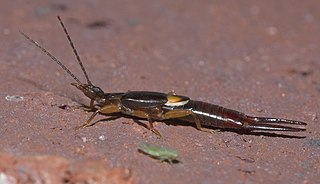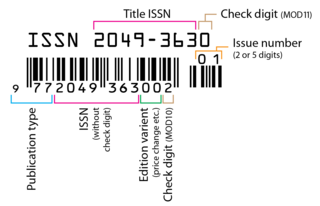
Pygidicranidae is a family of earwigs, formerly placed in the suborder Forficulina, now in the suborder Neodermaptera. The family currently contains twelve subfamilies and twenty six genera. Eight of the subfamilies are monotypic, each containing a single genus. Of the subfamilies, both Astreptolabidinae and Burmapygiinae are extinct and known solely from fossils found in Burmese amber. Similarly Archaeosoma, Gallinympha, and Geosoma, which have not been placed into any of the subfamilies, are also known only from fossils. Living members of the family are found in Australia, South Africa, North America, and Asia. The monotypic genus Anataelia, described by Ignacio Bolivar in 1899, is found only on the Canary Islands. As with all members of Neodermaptera, pygidicranids do not have any ocelli. The typical pygidicranid bodyplan includes a small, flattened-looking body, which has a dense covering of bristly hairs (setae). The pair of cerci at the end of the abdomen are symmetrical in structure. The head is broad, with the fourth, fifth and sixth antenna segments (antennomeres) that are not transverse. In general Pygidicranids also have equally sized ventral cervical sclerites, and in having the rearmost sclerite separated from, or only touching the center of the prosternum. Cannibalism of young has been observed in at least one species in the family, Challia hongkongensis, in which an adult female was found eating a still-living nymph of the same species. The same species in a different area has been observed possibly eating fruits or seeds, making the species an omnivore.
Ctenisolabis is a genus of earwigs in the subfamily Brachylabinae. It was cited by Srivastava in Part 2 of Fauna of India. It was also cited at an earlier date by Steinmann in his publication, The Animal Kingdom in 1986, 1989, 1990, and 1993.
Karschiellidae is a family of earwigs in the suborder Forficulina. Like the family Diplatyidae, Karschiellidae is a relatively small family with few members.
Anisolabis howarthi is a blind, troglobite species of earwig in the genus Anisolabis, the family Anisolabididae, the suborder Forficulina, and the order Dermaptera. The species is native to Hawaii, and was first classified by Brindle in 1979. According to a paper published by him in 1980 in the journal Pacific Insects, the species is first known true troglobite earwig; while there are other blind species that live underneath soil or humus, this is the first to actually inhabit a cave.

Forficulinae is a subfamily of earwigs in the family Forficulidae. There are about 12 genera and more than 160 described species in Forficulinae.
This taxonomy of the Dermaptera follows Engel & Haas (2007) to the rank of Tribe.
Allodahlia is a genus of earwigs in the family Forficulidae.

Spongiphoridae is a family of little earwigs in the suborder Neodermaptera. There are more than 40 genera and 510 described species in Spongiphoridae.

Vostox is a genus of little earwigs in the family Spongiphoridae. There are at least 20 described species in Vostox.
Marava is a genus of little earwigs in the family Spongiphoridae. There are at least 50 described species in Marava.

Neodermaptera is a suborder of earwigs in the order Dermaptera. There are about 14 families and more than 2,000 described species in Neodermaptera.
Allodahliinae is a subfamily of earwigs in the family Forficulidae. There are at least 3 genera and about 16 described species in Allodahliinae.
Ancistrogastrinae is a subfamily of earwigs in the family Forficulidae. There are about 6 genera and more than 30 described species in Ancistrogastrinae.

Anechurinae is a subfamily of earwigs in the family Forficulidae. There are about 9 genera and more than 70 described species in Anechurinae.
Neolobophorinae is a subfamily of earwigs in the family Forficulidae. There are about 5 genera and 19 described species in Neolobophorinae.

Opisthocosmiinae is a subfamily of earwigs in the family Forficulidae. There are about 18 genera and more than 100 described species in Opisthocosmiinae.
Skendylinae is a subfamily of earwigs in the family Forficulidae. There are about 12 genera and more than 60 described species in Skendylinae.
Diaperasticus is a genus of earwigs in the family Forficulidae. There are about six described species in Diaperasticus.











